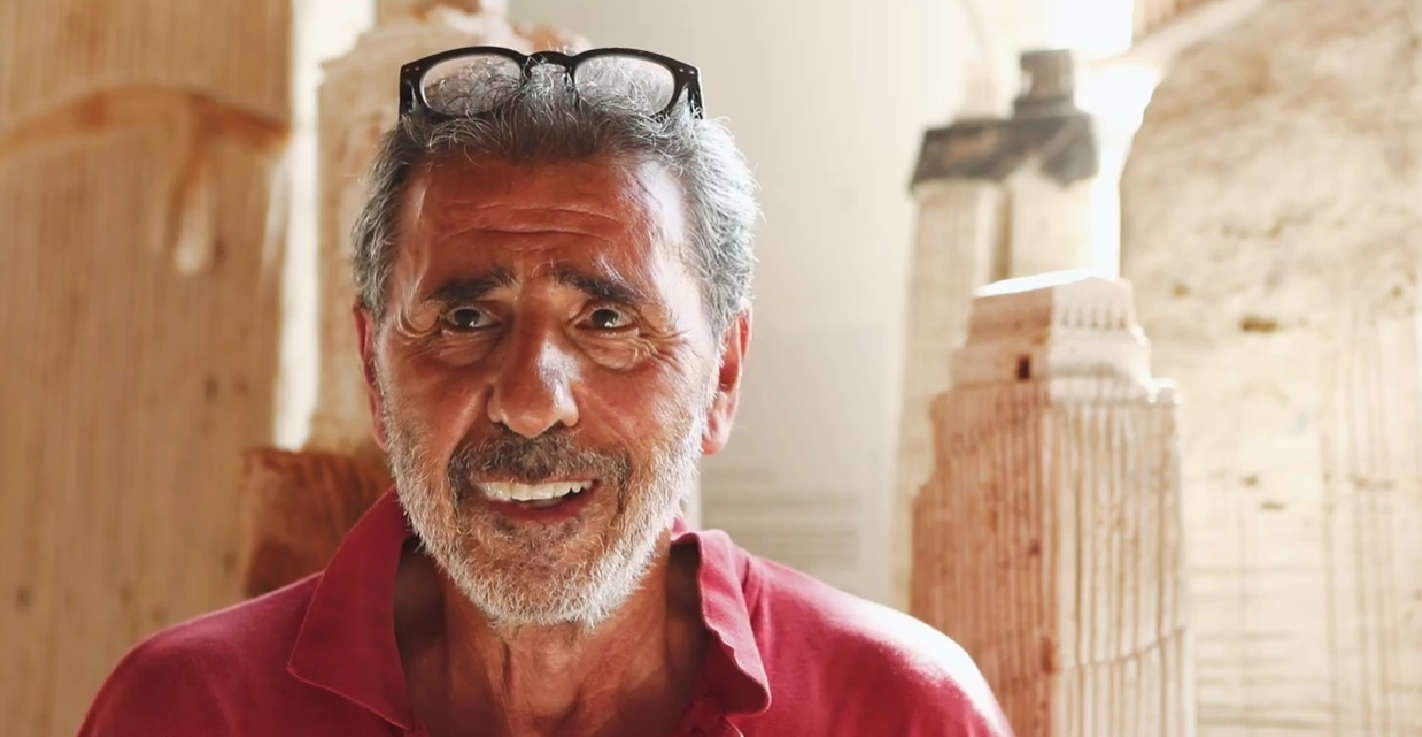Sculptor Girolamo Ciulla, famous for his sculptures, mainly in travertine, that revived the myths of ancient Greece in a contemporary key, has died in Pietrasanta at the age of 71 after a long illness. Born in Caltanissetta in 1952, after his beginnings in his native Sicily he had moved at a very young age to Tuscany (in fact, last April he received the honorary citizenship of Pietrasanta, the city where he had been living since 1988), making himself known as one of the most interesting young men of his generation, so much so that from 1987 he began to collaborate with one of the leading galleries in northern Italy, Galleria Forni in Bologna, with which he exhibited in several national and international shows and fairs.
Ciulla was known for his sculptures that could revive the myths of ancient Greece, which he had known during his childhood spent in Sicily, and which always reminded him of his native land. It is the common thought of critics that Ciulla was not a mere illustrator of myth: in his works, made in travertine or, less frequently, in marble, characters from ancient stories came to life, from the goddesses of classicism (starting with the goddess Demeter, the one who finds the most space in Ciulla’s production), totems, warriors that recall pre-Roman statuary. A Mediterranean art, elegant, capable of arousing calm and desire, of reconnecting the threads with a distant past. “The air we see circulating in Girolamo Ciulla’s sculptures,” Giorgio Soavi has written of him, “is that which passes from the lips of a suspended child, like a bee on a flower, to the mouth of its mother. By him ornament is erased in favor of a few symbols: because Ciulla makes feelings germinate.”
Many museums and spaces where he has exhibited his works, from the Venice Biennale to the Busan Biennale in South Korea via the Suzzara Prize in the 1990s, and then exhibitions at the Accademia San Luca in Rome, the Ragghianti Foundation in Lucca, the Basilica Palladiana in Vicenza, the Palazzo Ducale in Lucca, and the Mole Vanvitelliana in Ancona. Abroad, exhibitions in France, Germany, Holland. Many of Ciulla’s monuments can also be found around Italy and the world: the sculptures made for the church of San Pietro in Caltanissetta (2002), the Crocodiles for the square of Castagnola (2003), the installation with the Mensoloni for the square of Caltanissetta (2003). One of his works is also at the Vittoriale degli Italiani while his most recent public work is the Aphrodite Fountain inaugurated last year in Pietrasanta.
“We had been in contact with family members for a few days,” said the mayor of the Versilia town Alberto Stefano Giovannetti, “because the Maestro’s condition had worsened. Always helpful, easy-going and generous, our acquaintance goes back a long way, but the best moment I remember, with him, was when I called him at City Hall and told him to work on that sculpture-fountain that he had had in mind for more than 20 years and that, in June a year ago, we inaugurated together in Piazza Statuto. Aphrodite’s Water has been a great gift to our community.” Finestre Sull’Arte dedicated a video to Girolamo Ciulla; it can be viewed at this link.
 |
| Farewell to Girolamo Ciulla, the sculptor who revived Greek mythology |
Warning: the translation into English of the original Italian article was created using automatic tools. We undertake to review all articles, but we do not guarantee the total absence of inaccuracies in the translation due to the program. You can find the original by clicking on the ITA button. If you find any mistake,please contact us.